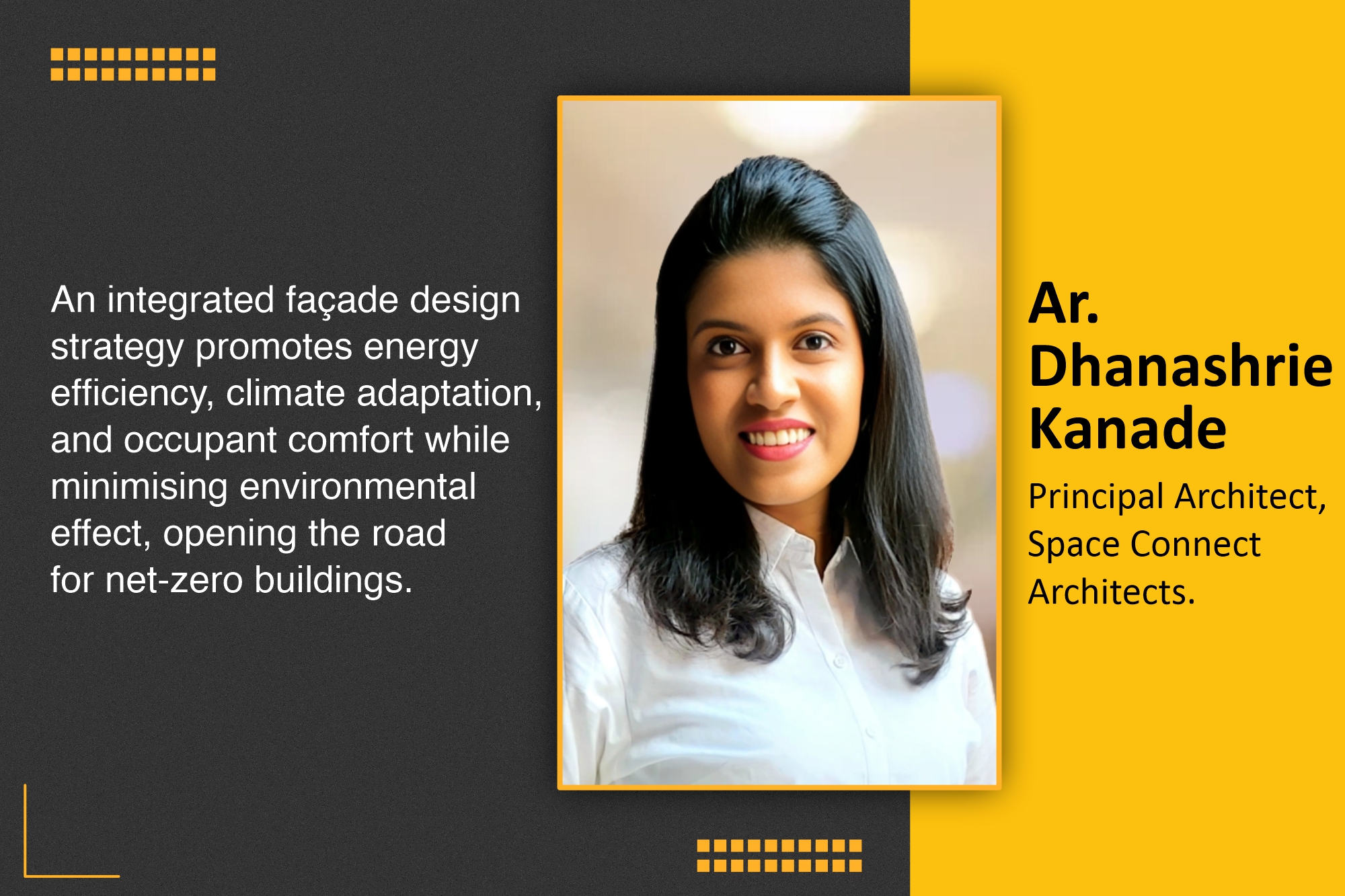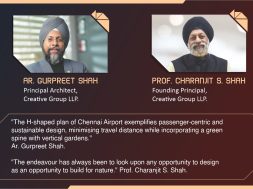Advancing sustainable façade design via innovation and technology

This discussion focuses on sustainable façade design, which enhances energy efficiency through material selection, modularity, technology, and innovations.
To design facades in a sustainable, environmentally responsive manner, how important is it to have an integrated façade design process?
An integrated façade design process ensuring collaboration among architects, engineers, and environmental consultants is essential for sustainability. This approach maximises energy performance through smart material choices, minimises environmental impact by prioritising sustainable materials, adapts to local climates using passive solar techniques, and enhances occupant comfort with optimal light, air, and temperature control.
Please highlight the key considerations in material selection for façades to achieve net zero.
Thermal insulation and using materials such as high-performance glass or aerogels are important to lessen the reliance on HVAC. Low-carbon materials, such as recycled steel or sustainably produced timber, reduce the building’s carbon footprint. It is important to choose durable materials to reduce replacements and waste. Similarly, locally sourced materials save transportation emissions and also benefit local economies. Furthermore, prioritising recyclable materials, such as certain types of glass and aluminium, allows for easier repurposing at the end of a building’s life.
How can modularity and prefabrication be efficiently used to design energy-efficient facades?
Modular and prefabricated facades facilitate energy-efficient architecture by increasing precision, decreasing waste, and accelerating construction. Off-site fabrication offers higher insulation quality, airtightness, and defect reduction, resulting in better performance. Factory production reduces material waste when compared to traditional on-site buildings. These solutions also make assembly faster, lowering on-site energy use. Furthermore, modular façades can be tailored to individual climates, optimising natural light, ventilation, and shading to maximise energy savings.
Describe the role of technology in designing high-performance facades.
Building performance simulation enables designers to predict façade behaviour under varying conditions, optimising heating, cooling, and natural light management. Dynamic glazing adjusts opacity based on sunlight, reducing heat gain in summer and retaining warmth in winter. Smart façades incorporate sensors that automatically regulate real-time shading, ventilation, and insulation. Additionally, advanced materials like vacuum-insulated glass and phase-change materials improve temperature adaptability, enhancing energy efficiency without compromising aesthetics.
What are your recommendations for reducing embodied carbon in the façade design stage?
Choosing low-carbon materials like timber or recycled steel minimises environmental impact. Optimising structural design reduces material use, cutting emissions at the production stage. Local sourcing lowers transportation emissions, supporting sustainability efforts. Additionally, incorporating recycled content in materials like glass or steel reduces resource consumption and decreases the overall carbon footprint.
Please throw some light on how modern glass facades influence the energy efficiency of a building.
High-performance glazing, including double or triple glazing, low-emissivity coatings, and thermally broken frames, minimises heat loss in winter and solar heat gain in summer, ensuring indoor comfort. Solar heat gain control, achieved through integrated shading devices or solar control coatings, reduces excess heat while maintaining natural light. Additionally, glass façades promote natural daylighting, decreasing reliance on artificial lighting and lowering overall energy consumption.
What are the latest innovations in glass facades that have significantly contributed to the energy efficiency of buildings?
Smart glass adjusts opacity based on sunlight, reducing heat and glare while maintaining natural light. Photovoltaic glass integrates solar cells, generating power to support a building’s energy needs. Vacuum-insulated glass eliminates air between panes, providing superior thermal insulation and transparency. Double-skin façades offer excellent insulation and natural ventilation, reducing cooling demands and improving overall energy performance.
For more details, visit: https://spaceconnectarchitects.com/
Cookie Consent
We use cookies to personalize your experience. By continuing to visit this website you agree to our Terms & Conditions, Privacy Policy and Cookie Policy.










